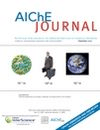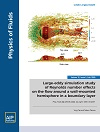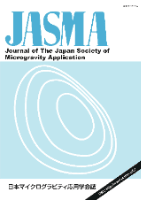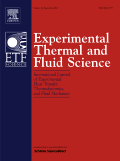
TRANSPORT IN POROUS MEDIA
Scope & Guideline
Exploring the Dynamics of Fluid and Energy Flow
Introduction
Aims and Scopes
- Fluid Flow Dynamics:
The journal extensively covers the dynamics of fluid flow through porous media, including single-phase and multiphase flow, as well as non-Darcian and reactive transport phenomena. - Pore-Scale Modeling:
A significant focus is placed on pore-scale modeling techniques, including lattice Boltzmann methods, pore network models, and computational fluid dynamics, to understand fluid behavior at the microscale. - Geological Applications:
Research often addresses geological applications such as CO2 sequestration, hydrocarbon recovery, and groundwater flow, emphasizing the environmental impact and sustainability. - Material Characterization:
The journal includes studies on the characterization of porous materials, including their mechanical and transport properties, using advanced imaging and modeling techniques. - Interfacial Phenomena:
Interfacial phenomena in porous media, such as wettability effects, capillary action, and phase transitions, are explored to understand their influence on transport processes.
Trending and Emerging
- Machine Learning in Transport Modeling:
There is a growing trend towards integrating machine learning techniques in the analysis and prediction of fluid transport behaviors, enhancing modeling capabilities and efficiency. - Digital Rock Physics:
The use of digital rock physics is increasingly prevalent, leveraging high-resolution imaging and computational models to study the microstructural characteristics of porous materials. - Advanced Multiphase Flow Studies:
Research on advanced multiphase flow dynamics, including the effects of pressure gradients and complex interactions between fluids, has gained momentum, reflecting the need for more accurate models in various applications. - Environmental and Sustainable Applications:
A rising focus on the environmental impact of fluid transport in porous media, particularly in relation to CO2 storage, groundwater contamination, and remediation technologies, highlights the journal's commitment to sustainability. - Interdisciplinary Approaches:
Emerging themes show an increase in interdisciplinary research, combining insights from geosciences, materials science, and engineering to address complex challenges in porous media transport.
Declining or Waning
- Traditional Analytical Models:
There has been a noticeable decline in papers relying on traditional analytical models for predicting transport in porous media, as researchers increasingly prefer numerical and computational approaches. - Basic Hydraulic Studies:
Studies focusing solely on basic hydraulic properties without consideration of complex interactions or advanced modeling techniques are becoming less common, reflecting a trend toward more integrated and multifaceted research. - Simplistic Two-Phase Flow Models:
Research employing simplistic models for two-phase flow in porous media has waned, as the field moves towards more comprehensive models that consider the complexities of real-world conditions.
Similar Journals

AICHE JOURNAL
Catalyzing Progress in Biotechnology and Environmental SolutionsAICHE JOURNAL, published by Wiley, is a premier academic journal that has been at the forefront of chemical engineering research since its inception in 1955. With an ISSN of 0001-1541 and an E-ISSN of 1547-5905, this esteemed journal has carved a niche within several vital fields, boasting a 2023 categorization of Q1 in Chemical Engineering (Miscellaneous), Q2 in Biotechnology, and Q2 in Environmental Engineering. The journal’s significant impact is demonstrated through its Scopus rankings, particularly its rank of #62 in General Chemical Engineering and #54 in Environmental Engineering, showcasing its influence and reach in these disciplines. Although not available as Open Access, AICHE JOURNAL plays a critical role in disseminating cutting-edge research essential for advancing knowledge and practice among professionals, researchers, and students in chemical and environmental engineering realms. With convergence expected until 2024, it remains a vital resource for the latest developments, methodologies, and innovations that shape the future of technology and sustainability in the scientific community.

European Transport Research Review
Exploring Innovations in European MobilityEuropean Transport Research Review is a prestigious academic journal published by Springer, focusing on cutting-edge research in the fields of automotive engineering, mechanical engineering, and transportation. Since its transition to an Open Access model in 2009, the journal has significantly contributed to the dissemination of knowledge, allowing unexplored insights to reach a global audience. Based in Germany, this journal stands out with its high impact factor and impressive Scopus rankings; it holds a Q1 status in both the Automotive and Mechanical Engineering categories, reflecting its prominence in academic and professional circles. With a commitment to advancing the frontiers of transport research, the European Transport Research Review serves as an essential resource for researchers, professionals, and students seeking to stay abreast of the latest developments and innovations in these critical sectors. Given its extensive reach and robust editorial guidelines, the journal attracts a diverse range of submissions that explore the multifaceted dynamics of transport systems across Europe and beyond.

Computational Thermal Sciences
Fostering Collaboration in Cutting-edge Thermal ResearchComputational Thermal Sciences, an esteemed journal published by BEGELL HOUSE INC, presents cutting-edge research at the intersection of computational mathematics, energy engineering, and fluid dynamics. With an ISSN of 1940-2503 and an E-ISSN of 1940-2554, this journal aims to disseminate high-quality research articles, reviews, and methodologies that improve our understanding of thermal processes and their applications. Renowned for its solid impact in the field, it holds a Q3 ranking in multiple categories including Computational Mathematics and Energy Engineering for 2023. As the field evolves, the journal continues to play a pivotal role in bridging theoretical research with practical innovations, thereby catering to a diverse audience of researchers, professionals, and students. Although it operates on a subscription model, the journal ensures accessibility to significant contributions in thermal sciences from 2009 to 2024, fostering an environment of knowledge sharing and collaboration.

JOURNAL OF FLUID MECHANICS
Connecting theory and application in fluid dynamics.JOURNAL OF FLUID MECHANICS, published by Cambridge University Press, is a premier international journal recognized for its significant contributions to the field of fluid dynamics. With an esteemed impact factor that places it in the Q1 category across multiple disciplines, including Applied Mathematics, Condensed Matter Physics, Mechanical Engineering, and Mechanics of Materials, this journal serves as a vital resource for researchers and practitioners alike. Established in 1956, it provides a platform for innovative and high-quality research articles that advance the understanding of fluid mechanics phenomena. The journal's rankings underscore its prestige, with Scopus recognizing it among the top journals in its category. Although it currently does not offer open access, the journal remains accessible to educational institutions and professionals in the United Kingdom and beyond. By addressing critical and emerging topics in fluid mechanics, JOURNAL OF FLUID MECHANICS is essential for those striving to push the boundaries of knowledge and application in this dynamic field.

PHYSICS OF FLUIDS
Exploring the Dynamics of Fluids with PrecisionPHYSICS OF FLUIDS is a premier journal published by AIP Publishing that serves as a vital resource for the fluid mechanics community. With an impressive impact factor and a consistent ranking in the Q1 quartile across multiple related disciplines—including Computational Mechanics, Condensed Matter Physics, Fluid Flow and Transfer Processes, Mechanical Engineering, and Mechanics of Materials—this journal is renowned for disseminating high-quality research in the dynamic field of fluid dynamics. Covering a wide range of topics, from fundamental fluid mechanics to advanced computational modeling, PHYSICS OF FLUIDS plays a crucial role in advancing understanding and fostering innovation in both academic and industrial applications. With its strong reputation and significant readership, this journal is essential for researchers, professionals, and students seeking to stay updated on the latest developments in fluid physics.

Interfacial Phenomena and Heat Transfer
Pioneering Discoveries in Fluid Flow and Thermal DynamicsInterfacial Phenomena and Heat Transfer is a leading academic journal published by BEGELL HOUSE INC that has rapidly established itself as an essential resource for scholars and industry experts in the fields of engineering, fluid flow, and chemical processes. With an ISSN of 2169-2785 and E-ISSN 2167-857X, this journal focuses on the critical interdisciplinary aspects of heat transfer and interfacial phenomena, offering insights that span across mechanical engineering, chemical engineering, and physical sciences. Despite its relatively recent inception in 2017, it has garnered respectable recognition, with a 2023 Scopus rank placing it in the Q3 category within the disciplines of Engineering (miscellaneous) and Fluid Flow and Transfer Processes, making it a pertinent publication for those interested in cutting-edge research. As researchers and professionals navigate the complexities of interfacial dynamics, Interfacial Phenomena and Heat Transfer serves as a pivotal platform, publishing high-quality, peer-reviewed articles that aim to advance knowledge and stimulate further investigation in this increasingly vital domain.

International Journal of Microgravity Science and Application
Exploring the Frontiers of Microgravity ScienceInternational Journal of Microgravity Science and Application is a pivotal academic publication dedicated to advancing the understanding and applications of microgravity phenomena across a plethora of scientific disciplines. Published by the Japan Society for Microgravity Application, this journal serves as a vital platform for researchers and practitioners aiming to explore the complexities and unique opportunities presented by microgravity environments. While primarily focused on the fields of materials science, fluid dynamics, and biological studies under microgravity conditions, the journal fosters interdisciplinary discussions and innovative research endeavors that can translate into real-world applications and technological advancements. Despite its non-open access model, the journal continues to be an invaluable resource for those engaged in space research and microgravity applications, thus contributing significantly to the scientific community's understanding of these essential topics.

PROCEEDINGS OF THE INSTITUTION OF CIVIL ENGINEERS-TRANSPORT
Driving Progress in Engineering Practices and MethodologiesPROCEEDINGS OF THE INSTITUTION OF CIVIL ENGINEERS-TRANSPORT, published by Emerald Group Publishing Ltd, is a vital scholarly journal dedicated to advancing knowledge in the fields of civil and structural engineering and transportation. With an ISSN of 0965-092X and an E-ISSN of 1751-7710, this journal has been a cornerstone of academic discourse since its inception in 1992, providing a platform for innovative research and case studies up until 2024. Although it currently holds a Q4 quartile ranking in both Civil and Structural Engineering and Transportation categories, its content aims to bridge gaps in existing literature, making it a relevant source for researchers, professionals, and students alike. The journal offers an array of insightful articles that contribute to the evolution of engineering practices and transportation methodologies, fostering a global dialogue among industry stakeholders. While it operates under a subscription model, the journal remains committed to enhancing public access to pivotal findings in engineering disciplines, driving forward the agenda of sustainable and efficient infrastructure development.

EXPERIMENTAL THERMAL AND FLUID SCIENCE
Pioneering discoveries in thermal and fluid engineering.EXPERIMENTAL THERMAL AND FLUID SCIENCE is a prestigious academic journal published by Elsevier Science Inc, dedicated to advancing the fields of thermal and fluid sciences. With a strong focus on innovative experimental research, it plays a crucial role in disseminating new knowledge and techniques across multiple domains, including Aerospace Engineering, Chemical Engineering, Fluid Flow and Transfer Processes, Mechanical Engineering, and Nuclear Engineering. Holding a notable impact factor and ranking in the Q1 quartile across these categories since 2023, the journal is recognized for its high-quality contributions, which appeal to a diverse audience of researchers, industry professionals, and students alike. Additionally, with dedicated coverage from its inception in 1988 to projections extending through 2025, EXPERIMENTAL THERMAL AND FLUID SCIENCE provides a vital platform for sharing advancements in experimental techniques and findings that shape the future of engineering and applied sciences.

Journal of Hydrodynamics
Fostering Scholarly Dialogue in Condensed Matter PhysicsWelcome to the Journal of Hydrodynamics, a premier academic journal dedicated to pioneering research in the fields of Condensed Matter Physics, Mechanical Engineering, Mechanics of Materials, and Modeling and Simulation. Published by Springer, this esteemed journal has been a vital resource since its inception in 1990 and boasts a notable Q1 ranking across its relevant categories, underscoring its importance in advancing knowledge and innovation. With a robust Scopus ranking reflecting its impact—such as being in the 82nd percentile in Mathematics: Modeling and Simulation and the 75th percentile in various engineering disciplines—the journal serves as a critical platform for researchers, professionals, and students. While not currently an open-access publication, the Journal of Hydrodynamics remains committed to fostering scholarly dialogue and disseminating high-quality research that shapes the future of its field. Our mission is to provide a comprehensive forum for the discussion of theoretical and applied hydrodynamics, potentially influencing both academic inquiry and practical applications worldwide.